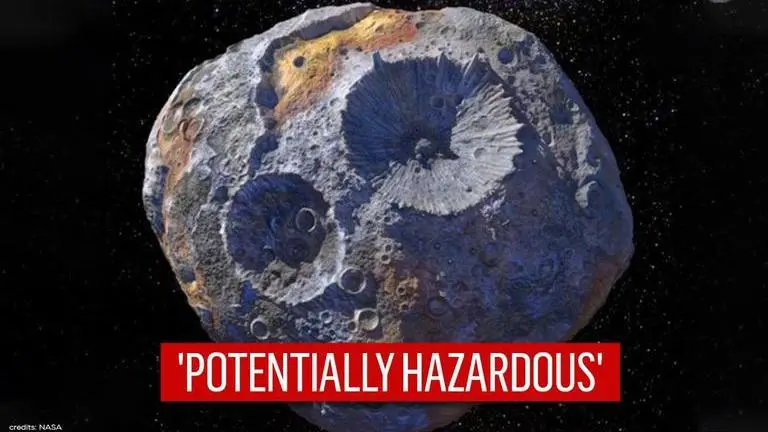Updated 13 November 2020 at 15:21 IST
Asteroids twice the size of Qutub Minar to fly past Earth on Diwali, will scatter firework
According to NASA monitoring services, asteroids are expected to miss hitting the Earth keeping at a distance more than 19 times between the Earth and Moon.
- Science News
- 2 min read

On November 12, NASA informed that a rogue asteroid about the size of India’s Qutub Minar will flyby planet Earth on the night of November 14, as the country celebrates Diwali. The “potentially hazardous” Asteroid 2020 TB9 and Asteroid 2020 ST1 will be coming closer to Earth at the speed of 28,646 km per hour. Although according to NASA’s release, the two asteroids are tiny, about 175 meters in size but are three times longer than a football pitch, the scientists estimated.
According to NASA monitoring services, asteroid 2020 ST1 is expected to miss hitting the Earth keeping at a distance more than 19 times the distance between the Earth and the Moon, approximately seven million kilometers as it whooshes past the Earth on November 14. The other asteroid is expected to make a low impact trajectory as both Near Earth Asteroids, or NEAs become fireballs outside Earth's atmosphere shattering apart.
We installed a new, much larger camera on the old Schmidt telescope this summer to hunt for near-Earth asteroids. Here's the first catch, 2020 VL1, which is also the smallest one discovered from us, being only 10-15 m wide! https://t.co/8PjOwUh0lG pic.twitter.com/C8iyeIc9ms
— Konkoly Observatory (@konkolyobs) November 11, 2020
“The vast majority of NEAs pass by safely at much greater distances – usually much farther away than the Moon,” NASA informed.
"It's really cool to see a small asteroid come by this close because we can see the Earth's gravity dramatically bend its trajectory," said Paul Chodas, director of the Center for Near-Earth Object Studies (CNEOS) at NASA's Jet Propulsion Laboratory in Southern California said about the NEA asteroids.
Advertisement
To scatter sediments
The 'potentially hazardous’ asteroids scatter sediments in the outer line of the solar system and have the potential to collide with Earth depending on its future orbits of the Sun, according to NASA. “Potentially Hazardous Asteroids (PHAs) are currently defined based on parameters that measure the asteroid’s potential to make threatening close approaches to the Earth,” NASA said. “Specifically, all asteroids with a minimum orbit intersection distance (MOID) of 0.05 au or less are considered PHAs,” it further informed. According to Jet Propulsion Laboratory (JPL) website, the asteroids have been nudged by the gravitational attraction of nearby planets into orbits that has caused them to enter the Earth.
MPEC 2020-S107 announced new potentially hazardous asteroid 2020 ST1. It was discovered at our 1.5m survey telescope by observer K. Wierzchos on September 18th, 2020. The asteroid has an estimated diameter between 156 - 271 meters. 2020 ST1 poses no impact threat to Earth. pic.twitter.com/bwwsLuteuw
— Catalina Sky Survey (@catalina_sky) September 22, 2020
Asteroid (2020 ST1) Potentially Hazardous Object | Close Approach Set on... https://t.co/arFKkc17uT via @YouTube
— Asteroid Station (@AsteroidStation) October 30, 2020
Advertisement
Published By : Zaini Majeed
Published On: 13 November 2020 at 15:22 IST
